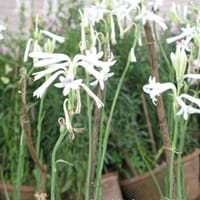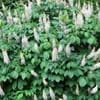Life Span
Perennial
Perennial
Origin
Southeastern United States
Mexico
Types
Not available
Sringar, Mexican Single, Pearl
Number of Varieties
Not Available
Habitat
Bluffs, Coastal Regions, Stream side, Woods
Cold Regions
USDA Hardiness Zone
5-9
7-11
Sunset Zone
Not Available
H1, H2, 7, 8, 9, 14, 15, 16, 17, 18, 19, 20, 21, 22, 23, 24
Habit
Spreading
Clump-Forming
Flower Color
White, Pink
White, Ivory
Flower Color Modifier
Bicolor
Not Available
Fruit Color
Brown
Not Available
Leaf Color in Spring
Green
Green, Sea Green, Blue Green
Leaf Color in Summer
Dark Green
Green, Sea Green, Blue Green
Leaf Color in Fall
Lemon yellow, Yellow green
Blue Green, Yellow green
Leaf Color in Winter
Not Available
Light Green
Leaf Shape
Palmate
Linear
Plant Season
Spring, Summer, Fall
Summer, Fall
Sunlight
Full Sun, Partial Sun, Partial shade
Full Sun, Partial Sun
Type of Soil
Clay, Loam, Sand
Loam, Sand
The pH of Soil
Acidic, Neutral, Alkaline
Acidic, Neutral
Soil Drainage
Average
Well drained
Bloom Time
Summer, Late Summer
Summer, Late Summer, Early Fall, Fall
Tolerances
Salt, Wind
Drought
Where to Plant?
Ground, Pot
Ground, Pot
How to Plant?
Cuttings, Seedlings
From bulbs, From Rhizomes
Plant Maintenance
Low
Medium
Watering Requirements
Keep the Soil well drained, Requires regular watering
Requires regular watering
In Summer
Lots of watering
Lots of watering
In Spring
Moderate
Moderate
In Winter
Average Water
Average Water
Soil pH
Acidic, Neutral, Alkaline
Acidic, Neutral
Soil Type
Clay, Loam, Sand
Loam, Sand
Soil Drainage Capacity
Average
Well drained
Sun Exposure
Full Sun, Partial Sun, Partial shade
Full Sun, Partial Sun
Pruning
Remove damaged leaves, Remove dead branches, Remove dead flowers, Remove dead leaves
cut main flower spike, Remove damaged leaves, Remove dead leaves
Fertilizers
14-14-14 Fertilizer, Apply N-P-K, slow-release fertilizers
8-8-8, All-Purpose Liquid Fertilizer
Pests and Diseases
Edema, Powdery mildew, Verticillium Wilt
Aphids, Mites, Thripes
Plant Tolerance
Salt, Wind
Cold climate, Drought
Flower Petal Number
Single
Single
Foliage Texture
Coarse
Fine
Foliage Sheen
Matte
Matte
Attracts
Butterflies, Hummingbirds
Butterflies
Allergy
Pollen
Not Available
Aesthetic Uses
Cottage Garden, Showy Purposes
along a porch, deck or patio, Beautification, Bouquets, Showy Purposes
Beauty Benefits
Not Available
Skin inflammation
Environmental Uses
Air purification, Wildlife
Air purification
Medicinal Uses
Antirheumatic, Colic, constipation, Piles
Antidepressant, Antiseptic, Antispasmodic, Sedative
Part of Plant Used
Seeds
Flowers
Other Uses
Used for making soaps
Decoration Purposes, Making deodorants, Making Perfumes, Used as essential oil, Used for its medicinal properties
Used As Indoor Plant
No
Yes
Used As Outdoor Plant
Yes
Yes
Garden Design
Feature Plant, Foundation, Screening, Wind Break
Cutflower, Feature Plant, Mixed Border
Botanical Name
AESCULUS parviflora
POLIANTHES tuberosa
Common Name
bottlebrush buckeye, dwarf horse chestnut
Tuberose
In Hindi
Bottlebrush Buckeye
रजनीगंधा
In German
Buckeye Putzer
Tuberose
In French
Bottlebrush Buckeye
Tubéreuse
In Spanish
bottlebrush Buckeye
nardo
In Greek
bottlebrush Buckeye
Τουμπερόζα
In Portuguese
Bottlebrush Buckeye
Tuberosa
In Polish
Bottlebrush Buckeye
Tuberoza
In Latin
bottlebrush Buckeye
Tuberose
Phylum
Magnoliophyta
Magnoliophyta
Class
Magnoliopsida
Liliopsida
Order
Sapindales
Asparagales
Family
Hippocastanaceae
Amaryllidaceae
Genus
Aesculus
Polianthes
Clade
Angiosperms, Eudicots, Rosids
Angiosperms, Monocots
Tribe
Not Available
Not Available
Subfamily
Hippocastanoideae
Not Available
Number of Species
Not Available
Season and Care of Bottlebrush Buckeye and Tuberose
Season and care of Bottlebrush Buckeye and Tuberose is important to know. While considering everything about Bottlebrush Buckeye and Tuberose Care, growing season is an essential factor. Bottlebrush Buckeye season is Spring, Summer and Fall and Tuberose season is Spring, Summer and Fall. The type of soil for Bottlebrush Buckeye is Clay, Loam, Sand and for Tuberose is Loam, Sand while the PH of soil for Bottlebrush Buckeye is Acidic, Neutral, Alkaline and for Tuberose is Acidic, Neutral.
Bottlebrush Buckeye and Tuberose Physical Information
Bottlebrush Buckeye and Tuberose physical information is very important for comparison. Bottlebrush Buckeye height is 180.00 cm and width 180.00 cm whereas Tuberose height is 60.00 cm and width 30.00 cm. The color specification of Bottlebrush Buckeye and Tuberose are as follows:
Bottlebrush Buckeye flower color: White and Pink
Bottlebrush Buckeye leaf color: Green
Tuberose flower color: White and Ivory
- Tuberose leaf color: Green, Sea Green and Blue Green
Care of Bottlebrush Buckeye and Tuberose
Care of Bottlebrush Buckeye and Tuberose include pruning, fertilizers, watering etc. Bottlebrush Buckeye pruning is done Remove damaged leaves, Remove dead branches, Remove dead flowers and Remove dead leaves and Tuberose pruning is done cut main flower spike, Remove damaged leaves and Remove dead leaves. In summer Bottlebrush Buckeye needs Lots of watering and in winter, it needs Average Water. Whereas, in summer Tuberose needs Lots of watering and in winter, it needs Average Water.





